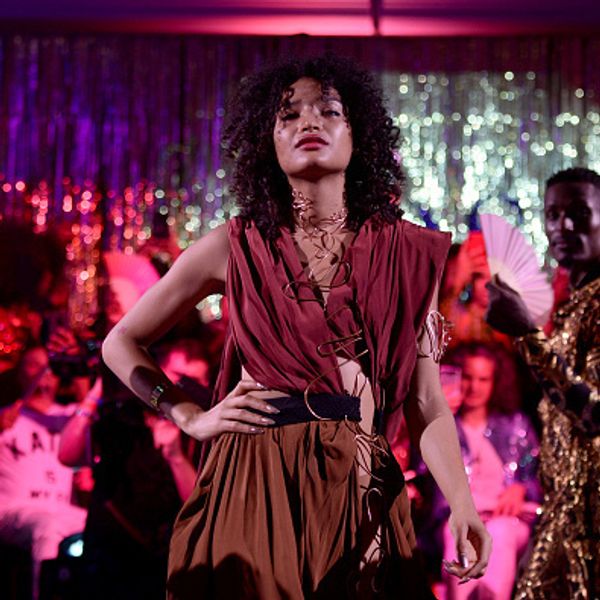
Cis People: You Can Relate to Trans Characters
Jul 03, 2018
Ryan Murphy's Pose features the highest number of trans actors of any television cast ever, and centers LGBTQ people behind the scenes as well (check out our interview with co-producer Janet Mock, the first trans woman of color to work in a television writer's room). It's a show where LGBTQ people are the stars, the heroes. Critics have lavishly praised Pose, and there's an enthusiastic audience as well. But then there's that concept of which network executives always seem so very fond: relatability.
Pose star Indya Moore tweeted that she doesn't want to hear about cis people and their issues with relating to the show's LGBTQ characters. "LGBTQ people have always been forced to empathize, relate & conform to the motions, imagination and narratives of cishet [experience]," she wrote. "And we do, seamlessly [because] people may be different but the humanity is not."
Related | Janet Mock on Why FX's 'Pose' Is 'Deeply Revolutionary'
Concerns about whether LGBTQ stars would be "relatable" enough have persisted for decades. And though there's been progress in that area — GLAAD's most recent TV report showed that 2017 featured the highest number of LGBTQ characters on television ever — we can always do better. 2017 may have been a record best year, but out of 901 total recurring characters, only 58 identified as LGBTQ, and of those characters, 77% were white.
The relatability conversation is still in play when it comes to white audiences watching characters of color, and it's the same when it comes to male audiences watching female-led casts. Major blockbusters like Black Panther and Wonder Woman have done work in breaking down those barriers (and watch out for the August release of Crazy Rich Asians), but isn't it an absurd thing to think in the first place? Audiences have shown time and time again that they like well-written, exciting projects, even if the characters don't look like them. Cis people can enjoy Pose because it's fantastic television. It's not that complicated.
Photo via Getty
MORE ON PAPER
Music
Janelle Monáe, HalloQueen
Story by Ivan Guzman / Photography by Pol Kurucz/ Styling by Alexandra Mandelkorn/ Hair by Nikki Nelms/ Makeup by Sasha Glasser/ Nails by Juan Alvear/ Set design by Krystall Schott
Story by Ivan Guzman / Photography by Pol Kurucz/ Styling by Alexandra Mandelkorn/ Hair by Nikki Nelms/ Makeup by Sasha Glasser/ Nails by Juan Alvear/ Set design by Krystall Schott
27 October
Music
You Don’t Move Cardi B
Story by Erica Campbell / Photography by Jora Frantzis / Styling by Kollin Carter/ Hair by Tokyo Stylez/ Makeup by Erika LaPearl/ Nails by Coca Nguyen/ Set design by Allegra Peyton
Story by Erica Campbell / Photography by Jora Frantzis / Styling by Kollin Carter/ Hair by Tokyo Stylez/ Makeup by Erika LaPearl/ Nails by Coca Nguyen/ Set design by Allegra Peyton
14 October
Entertainment
Matthew McConaughey Found His Rhythm
Story by Joan Summers / Photography by Greg Swales / Styling by Angelina Cantu / Grooming by Kara Yoshimoto Bua
Story by Joan Summers / Photography by Greg Swales / Styling by Angelina Cantu / Grooming by Kara Yoshimoto Bua
30 September
Music
Demi Lovato Is No Joke
Story by Ivan Guzman / Photography by Jason Renaud / Styling by Chris Horan/ Makeup by Loftjet / Set design by Allegra Peyton
Story by Ivan Guzman / Photography by Jason Renaud / Styling by Chris Horan/ Makeup by Loftjet / Set design by Allegra Peyton
15 September
Music
Role Model Isn’t In Kansas Anymore
Story by Tobias Hess / Photography by Richie Talboy / Styling by Angelina Cantú / Grooming by Jerrod Roberts / Set design by Allegra Peyton
Story by Tobias Hess / Photography by Richie Talboy / Styling by Angelina Cantú / Grooming by Jerrod Roberts / Set design by Allegra Peyton
14 August




